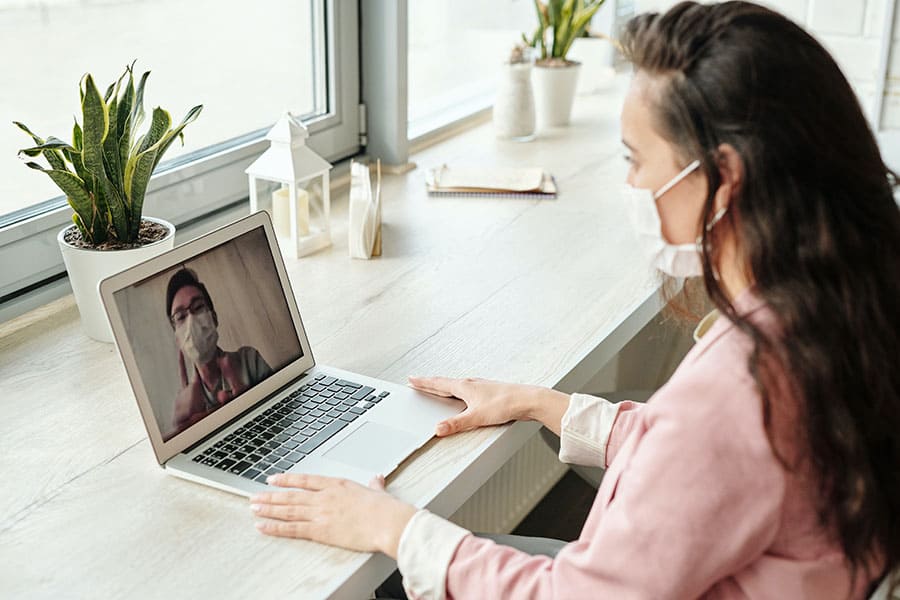Researchers urgently call for global telehealth guidelines to support AHPs

Staffordshire University health experts claim there is an urgent need for global telehealth guidelines for allied health professionals (AHPs) in a bid to improve remote patient care.
Robust guidelines for clinicians should be made available on a global scale, so that AHPs know how to appropriately carry out remote consultations and prevent patient harm, the university advises.
The COVID-19 pandemic saw an unprecedented expansion of telehealth with a shift to remote patient consultations across the allied health professions which includes prosthetics and orthotists, physiotherapy, podiatry, orthoptists, occupational therapists, dieticians and osteopathy.
However, a new study published in BMJ Open, which examines current guidelines for the 14 AHPs in the UK, reveals a clear need to solve the disparities in the level of guidance for remote consultations between professions.
Professor Nachi Chockalingam, Director of the Centre for Biomechanics and Rehabilitation Technologies (CBRT) at Staffordshire University, explained: “Good patient satisfaction, greater accessibility, convenience, and reduced travel and wait times are some of the factors that have led to increased telehealth usage and acceptability.
“Although the pandemic has accelerated the transition to technology-mediated care, concerns and limitations related to remote consultations and the unintended risks, errors and harm that can occur to patients during and/or as a result of remote consultations are still present.”
While telehealth can be considered an efficient and safe way to deliver consultations, in practice, there are barriers which can lead to unintended consequences, the university underlines. These include technological constraints such as inadequate internet bandwidth, lack of skills among users, patient confidentiality, privacy as well as data security issues.
Additionally, concerns have been raised about the risk of patient harm resulting from the lack of diagnostic and therapeutic quality of services delivered through telehealth, as this can lead to highly infectious and life-threatening conditions being missed.
The study revealed that most telehealth guidelines were designed to quickly respond to the need for remote patient consultations during the Covid-19 pandemic and recommends that available guidelines should be reviewed to ensure they meet the long-term needs of patient consultations.
Very few guidelines were specifically designed for certain clinical populations, which acknowledged that telehealth consultations need to be adapted to meet individual needs. It was also found that most guidelines were specifically designed for occupational therapists, physiotherapists and speech and language therapists, leaving the other AHP groups with very few or inadequate guidelines.
Associate Professors Dr Aoife Healy and Dr Nicola Eddison of CBRT added: “Robust guidance should be available to assist clinicians by offering clear instructions on how to provide remote consultations, which would also help them limit inappropriate and ineffective interventions, and most importantly, harm to patients.
“Our work highlights that future research and collaborative work across AHP groups and the world’s leading health institutions are required to establish common guidelines which will improve AHP telehealth services. This will be a first step to establish global telehealth guidelines that can be adapted to local contexts with a view to improve quality of AHP service provision across the world.”
The study further recommends that as the use of telehealth appointments is often left down to clinical judgement, decision aids specific for possible clinical scenarios would be useful adjuncts to the AHPs’ decision-making process and would help AHPs offer telehealth only to those patients for whom it is appropriate.
Additionally, it suggests that the involvement of a multidisciplinary team and new roles – such as telehealth service coordinator and an AHP digital leader – in the delivery of telehealth would be helpful to promote cooperative telehealth activities and relationships across the AHP areas.
Staffordshire University researchers are also collaborating with international NGOs on the development of telehealth options for the provision of assistive technology.
Recent research from the University of Lincoln, Lincolnshire County Council and Serco into how assistive technology could help people recovering from medical conditions live independently at home has found that the introduction of telehealth could prove to be a health and social care game-changer.
According to the research, some of the benefits of telehealth implementation for the NHS could include reduced patient waiting times, improved medication reviews, a reduction in unnecessary clinical visits, and improved patient discharge support.

